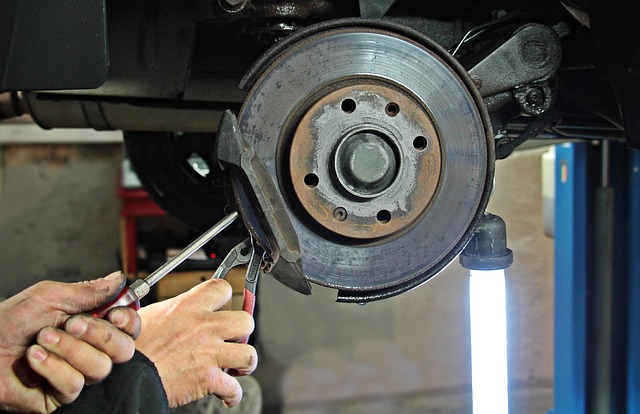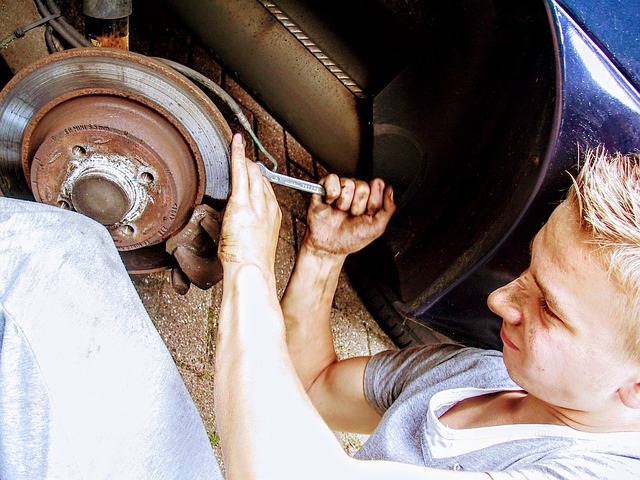Concrete cracks, ranging from aesthetic to structural concerns, require prompt action using effective crack repair methods. Severity evaluation is key, with DIY options for minor cracks and professional intervention needed for severe cases. Types of cracks, like surface or settlement-induced diagonal cracks, dictate tailored repairs, including polymer filling, carbon fiber reinforcement, or epoxy injections. Regular inspections and appropriate product selection prevent further damage, ensuring long-lasting concrete structure durability and aesthetic appeal.
Concrete cracks can mar the aesthetics and structural integrity of buildings, but effective crack repair solutions are readily available. This comprehensive guide delves into the intricate world of concrete crack repair, addressing various types, severity levels, and repair methods. From understanding the causes behind cracks to exploring advanced technologies, we provide insights on non-structural and structural repairs, preventive measures, and common mistakes to avoid. Discover expert tips for restoring your concrete surfaces to their optimal condition through this definitive guide on crack repair.
Understanding Concrete Cracks: Causes and Types

Concrete cracks can range from mere aesthetics to serious structural issues, necessitating prompt attention through effective crack repair methods. Understanding the causes and types of these cracks is a crucial first step in addressing them. Surface cracks, often the most visible, result from minor movements and shrinkage of the concrete. These are typically non-structural and can be repaired by filling with a suitable polymer-based product designed for crack repair.
More severe structural cracks, on the other hand, indicate deeper problems like settlement, heave, or poor original construction. Cracks due to settlement often appear as diagonal cracks and may require more intensive repairs involving carbon fiber reinforcement or deep-penetrating epoxy injections. Identifying the specific type of crack is essential in selecting the appropriate crack repair technique for durability and longevity.
Evaluating Crack Severity and Repair Methods

Evaluating crack severity is crucial before selecting a repair method for concrete structures. Minor cracks, typically less than 0.2 mm wide and not progressing, may only require regular inspection and maintenance. For wider or deeper cracks that show signs of growth or affect structural integrity, professional intervention is necessary. Structural engineers can assess crack patterns, width, depth, and location to determine the best course of action.
Common repair methods for concrete cracks include drilling and patching, chemical injection, and carbon fiber reinforcement. Drilling and patching involves cleaning the crack, drilling along its length, and filling it with a suitable mortar. Chemical injection, or crack routing, uses a pressure-injection process to apply epoxy or polyurethane to seal and stabilize the crack. Carbon fiber wraps or sheets can be applied over wider cracks for added strength and to prevent further damage. The chosen method depends on crack characteristics and structural requirements, ensuring long-lasting crack repair.
Non-Structural Crack Repairs: DIY and Professional Solutions

Non-structural cracks, while not affecting the concrete’s load-bearing capacity, are still unsightly and can weaken a structure’s aesthetics. DIY crack repair is a popular choice for minor cracks that are less than 0.25 inches wide. Homeowners can use epoxy injection or hydraulic cement to fill these gaps. This method involves mixing the material with water, applying it to the crack using a syringe or trowel, and then allowing it to cure. It’s an affordable solution that can be done over the weekend as a DIY project.
For wider cracks or those in more visible areas, professional intervention is recommended. Concrete contractors use advanced techniques such as carbon fiber wraps or polyurethane injection molding for more substantial repairs. These methods enhance crack stability and longevity while maintaining the concrete’s structural integrity. Professional solutions are particularly useful in commercial settings where aesthetics play a significant role, ensuring that buildings retain their curb appeal even after crack repair.
Structural Crack Fixing: When to Call a Specialist

Concrete cracks can range from mere aesthetics to significant structural issues, requiring prompt attention. While some minor cracks might be manageable with DIY methods, structural crack fixing demands professional intervention. It’s crucial to recognize when a crack repair goes beyond your capabilities and when to call a specialist.
If you notice large, widening cracks that extend across the entire structure or near critical components like foundations, columns, or beams, it’s an indication of serious structural damage. These types of cracks can compromise the integrity of the building, making it unsafe and potentially causing further deterioration. In such cases, promptly contacting a structural engineer or a specialized crack repair service is essential to assess the severity and provide effective solutions, ensuring long-term stability and safety.
Advanced Crack Repair Technologies and Innovations

In recent years, crack repair technologies have advanced significantly, offering innovative solutions for concrete structures. One such advancement is the use of advanced polymer-based compounds that can fill and seal cracks, providing a durable and flexible repair. These materials mimic the properties of concrete, ensuring long-lasting strength and resistance to further damage. They are particularly useful in challenging environments, such as areas prone to extreme temperatures or chemical exposure.
Additionally, modern crack repair methods involve automated equipment and precision tools that enable faster and more accurate repairs. For instance, hydraulic fracturing techniques can effectively clean and widen cracks, allowing specialized filling materials to bond firmly with the existing concrete. These innovations not only enhance structural integrity but also reduce costs and minimize disruption during the repair process.
Preventive Measures: Strengthening Concrete to Avoid Cracking

Concrete cracking can be a costly and unsightly issue, but taking preventive measures can save time and money in the long run. One of the most effective strategies is to enhance the concrete’s strength before cracks even appear. This involves several steps that act as a protective shield against potential damage.
First, ensuring proper mixing and placement of concrete during construction is key. The right mix design, including adequate cement, aggregate, and water content, creates a robust foundation. Additionally, allowing for sufficient curing time lets the concrete harden evenly, reducing the likelihood of early-stage cracks. Regular inspection and maintenance are also vital; identifying weak spots or signs of stress early can lead to timely crack repair before they worsen.
Common Mistakes in Concrete Crack Repair and How to Avoid Them

Concrete crack repair is a common concern for many property owners, but it’s important to understand the do’s and don’ts to ensure effective solutions. One of the most prevalent mistakes is ignoring small cracks. Many homeowners assume that repairing cracks only occurs when they become wide or visible. However, small cracks can grow over time, leading to more extensive damage. Regular inspection is key; addressing cracks early prevents further deterioration and costly repairs.
Another common blunder is using the wrong repair method. Different types of cracks require distinct approaches. Hauling off loose concrete and replacing it might be suitable for structural cracks but not for hairline fractures caused by thermal expansion. Using the appropriate products and techniques, such as epoxy injections or polymer-based sealers, directly addresses crack causes, ensuring long-lasting repairs.
